The Nydam Boats
Nydam in the south of present Denmark was one of those sacrifice sites. Following two or more local battles sometime between 200-450 AD, the defeated enemy's weapons and boats were sunk in a lake as a sacrifice. The lake gradually turned into a peat bog. First excavationThe first known finds from the bog are in the 1830s, when a local farmer gave old swords and shields as toys to his children. Finally, during 1859-1863, archaeologist Conrad Engelhardt excavated the bog, in Nydam in southern Denmark. He found weapons, tools, pieces of clothing and two intact clinker built boats, one made of oak and one made of pine. The weapons include lances, spears, bows, arrows and round shields. Under these finds were the remains of a third boat, which apparently had been demolished already during the sacrifice. During the 1864 Danish-German war, the smaller of the two boats, perhaps 19 m long and made of pine, was cut up to firewood and burned by ignorant troops. But the other boat, made of oak, was salvaged. It is now on display in Archäologisches Landesmuseum, Gottorp Castle, Schleswig, Germany.
Most recent excavationBetween 1864 and 1939 the site was partially excavated on several occasions. But during 1984-1997 the old site finally got a systematic excavation. The first problem was locating the original site in the moss. Eventually, more weapons and thousands of artefacts from both boats have been found, e.g. oars and an anchor stock. The oars are between 2.2 and 3.4 m long. In 1993 a complete 1.8 m long steering oar (side rudder, a.k.a. quarter rudder) was found.
The oak boatThe sacrifice site was probably used at different occasions during the time 200-450 AD. The oak boat was the first boat found, and the only one still preserved. It has has been dendro dated to 310-320 AD. The oak boat is considered the oldest Nordic shipfind and the oldest known clinker built boat. It is 23 m long, c 4 m wide, of clinker type, and built for 15 pairs of oars. Permanently exhibited in the museum in Schleswig. There is no trace of any mast foot, so it probably never carried any mast or sail. The long narrow shape, as well as sacrificed weapon on the site, indicate that it was a warship. Already Tacitus wrote that Nordic ships used no sails. Oak boat sculptured posts?Some of the most remarkable finds were made in 1993 – two 1.4 m long wooden sculptures, believed to have served as mooring posts in the oak boat's bow. The excavation was conducted by Flemming Rieck, Institute of Maritime Archaeology in Roskilde, Denmark. Presumed position of the two sculptured posts. by Per Åkesson, March 1998, rev 2005 |
The oak boat on temporary display in Copenhagen 2003. Photo: Axel Nelson
First sculpture, broken off below neck.
Second sculpture in situ, with stem extending nearly one metre below neck.
Similar posts on a contemporary Norwegian boat. |
||
Related topic & textLinks
References
|
|||
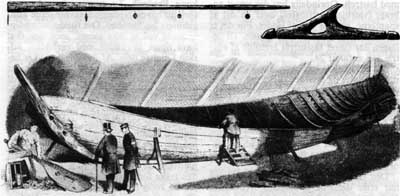

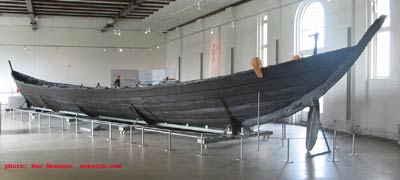
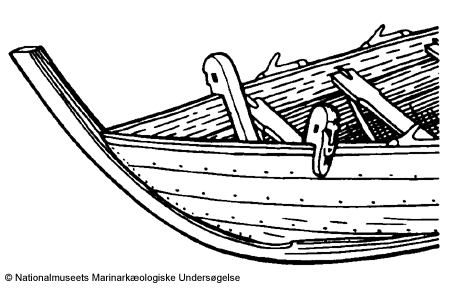
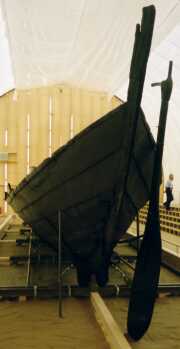
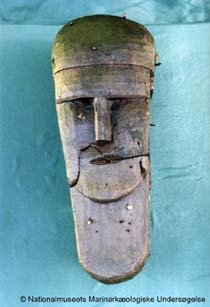
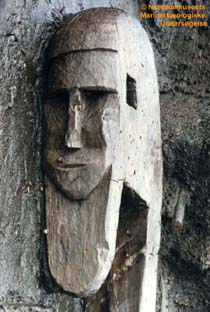
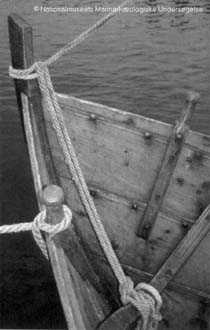
 Back to Nordic Underwater Archaeology
Back to Nordic Underwater Archaeology